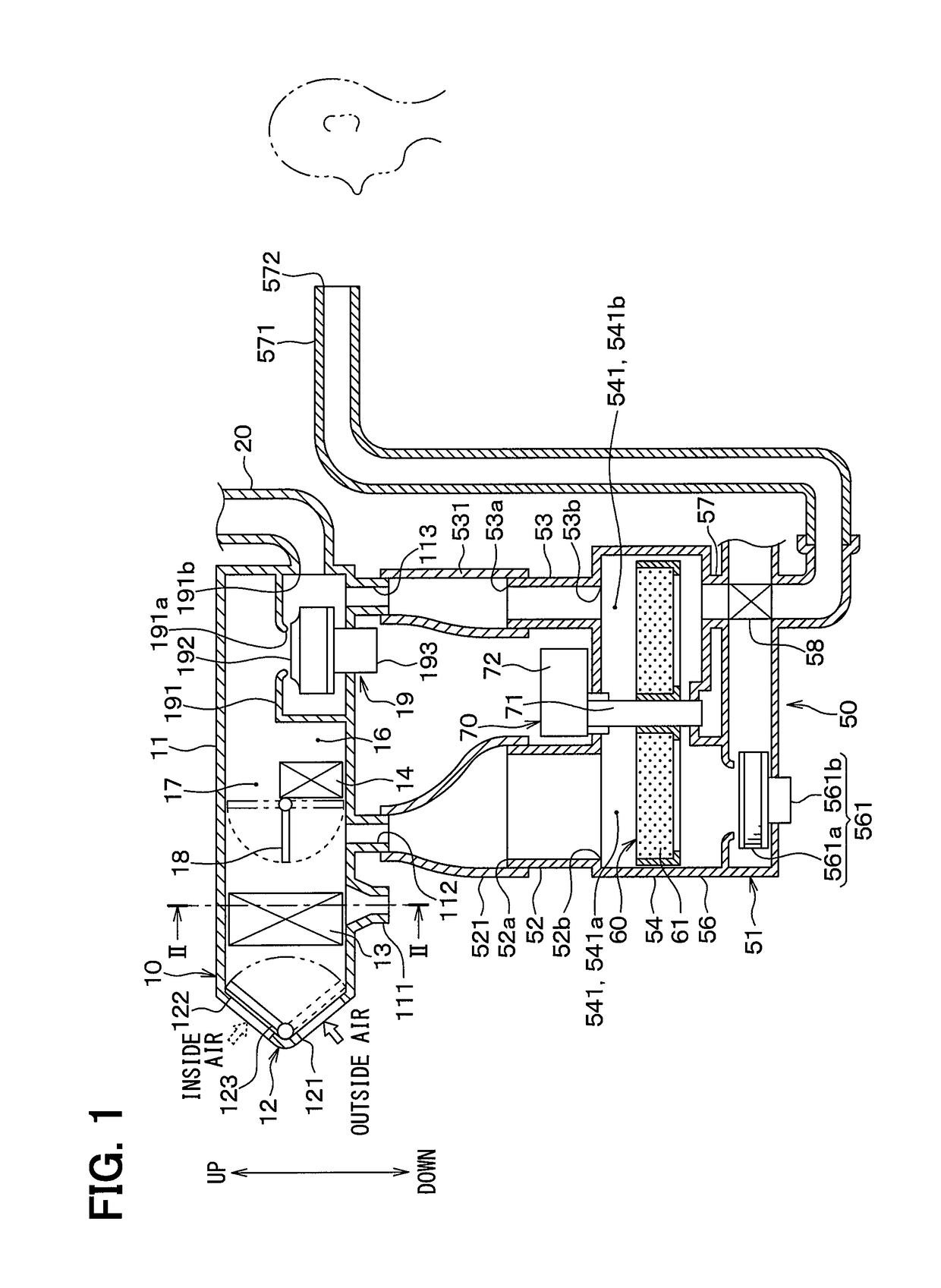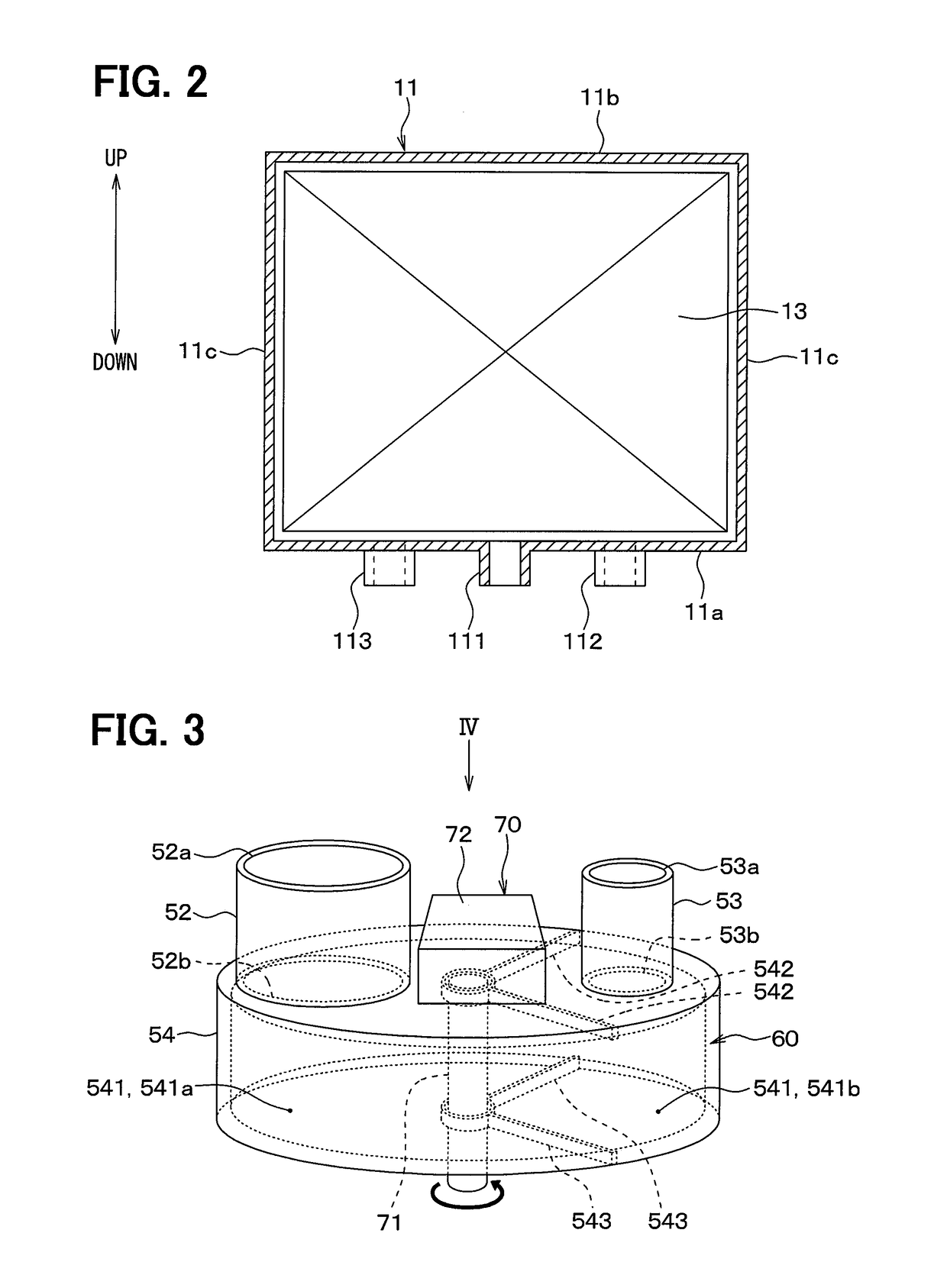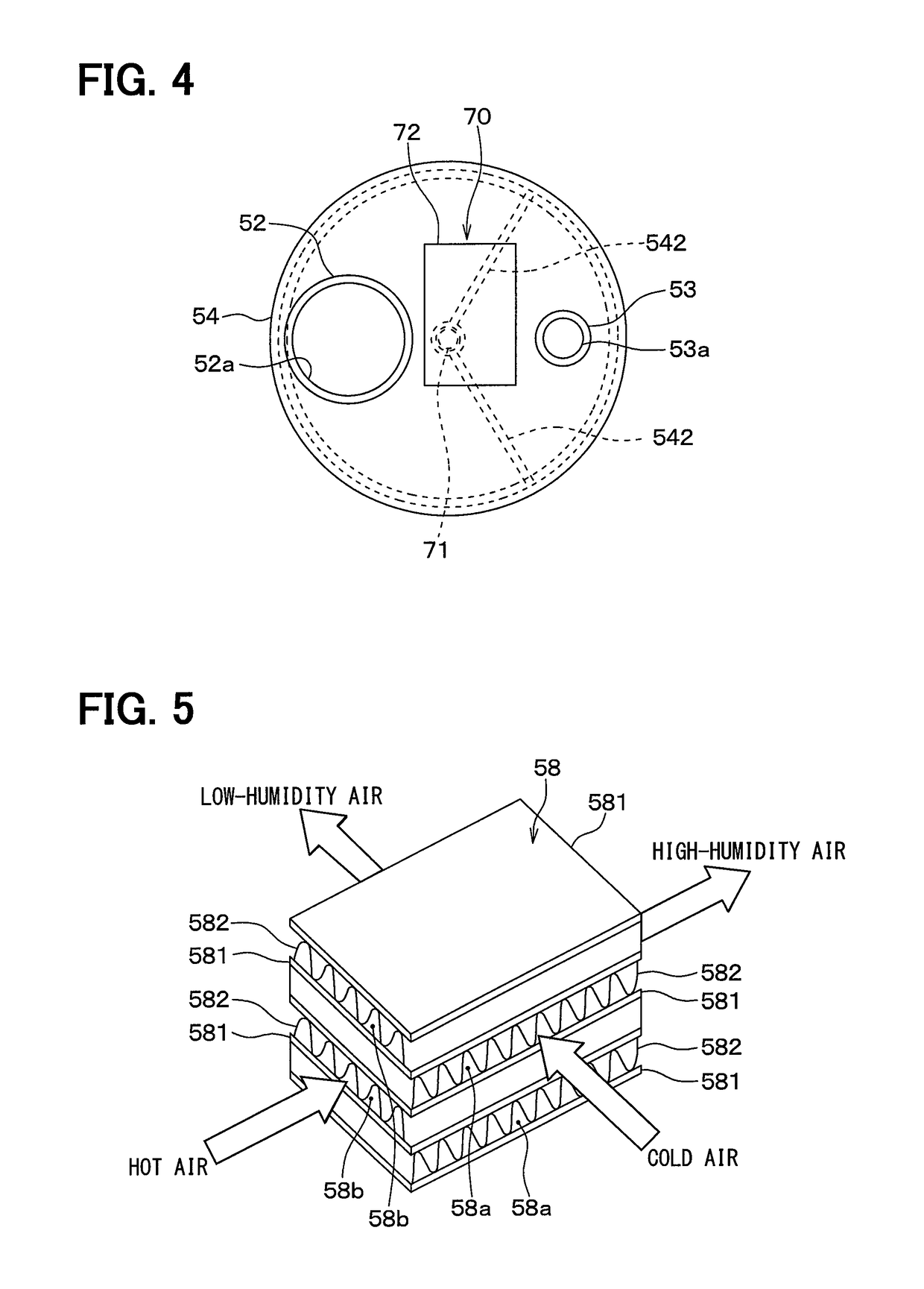Humidification device and air conditioner for vehicle
a technology for humidification devices and vehicles, applied in lighting and heating apparatus, transportation and packaging, heating types, etc., can solve the problems of inability to efficiently humidify the interior of the vehicle, limit the amount of water for replenishing the tank,
- Summary
- Abstract
- Description
- Claims
- Application Information
AI Technical Summary
Benefits of technology
Problems solved by technology
Method used
Image
Examples
first embodiment
[0031]This embodiment will describe an example in which a vehicle air conditioner to perform air-conditioning of the vehicle interior is applied to a vehicle that obtains a driving force for vehicle traveling from an internal combustion engine (for example, engine) (not shown). As shown in FIG. 1, the vehicle air conditioner includes an air-conditioning unit 10 and a humidification device 50 as main components. Note that respective arrows indicating the upper and lower sides shown in FIG. 1 indicate the up and down directions when the vehicle air conditioner is mounted on the vehicle. The same goes for other drawings.
[0032]First, the air-conditioning unit 10 will be described. The air-conditioning unit 10 is disposed below a dashboard (i.e., an instrumental panel) in the vehicle interior. The air-conditioning unit 10 accommodates an evaporator 13 and a heater core 14 in an air-conditioning case 11 forming an outer shell of the air-conditioning unit.
[0033]The air-conditioning case 11...
second embodiment
[0134]Next, a second embodiment will be described with reference to FIG. 9.
[0135]This embodiment differs from the first embodiment in that the humidification device 50 is applied to an air-conditioning unit 10A in which an air-conditioning blower 19A is disposed on the air-flow upstream side of the evaporator 13. In this embodiment, the description of the same or equivalent parts or the like as those in the first embodiment will be omitted or simplified.
[0136]As shown in FIG. 9, in the air-conditioning unit 10A of this embodiment, the air-conditioning blower 19A is disposed on the air-flow downstream side of the inside / outside air switching box 12 and on the air-flow upstream side of the evaporator 13. In the air-conditioning blower 19A of this embodiment, the suction port 191a is opened toward the inside / outside air switching box 12, while the discharge port 191b is opened toward the evaporator 13.
[0137]A hot-air guiding portion 113A in this embodiment is formed on the air-flow dow...
third embodiment
[0148]Next, a third embodiment will be described with reference to FIG. 10. This embodiment differs from the first embodiment in that a discharge route for the air passing through the moisture-adsorption space 541a of the adsorption case 51 is modified. In this embodiment, the description of the same or equivalent parts or the like as those in the first embodiment will be omitted or simplified.
[0149]As shown in FIG. 10, in this embodiment, the air-conditioning case 11 is connected to an opening as the downstream-side end of a cold-air discharge duct 562 so as to allow the air having passed through the moisture-adsorption space 541a to be discharged toward the outside. In this embodiment, the cold-air discharge duct 562 is connected to the air-conditioning case 11 such that the air flowing through the cold-air discharge duct 562 is returned to the cold-air bypass passage 17. Note that a part of the connection of the cold-air discharge duct 562 is not limited thereto, and can be conne...
PUM
 Login to View More
Login to View More Abstract
Description
Claims
Application Information
 Login to View More
Login to View More - R&D
- Intellectual Property
- Life Sciences
- Materials
- Tech Scout
- Unparalleled Data Quality
- Higher Quality Content
- 60% Fewer Hallucinations
Browse by: Latest US Patents, China's latest patents, Technical Efficacy Thesaurus, Application Domain, Technology Topic, Popular Technical Reports.
© 2025 PatSnap. All rights reserved.Legal|Privacy policy|Modern Slavery Act Transparency Statement|Sitemap|About US| Contact US: help@patsnap.com



